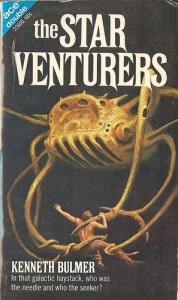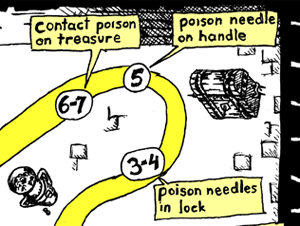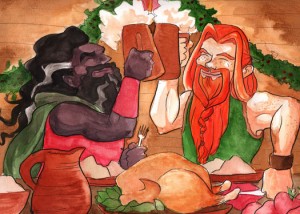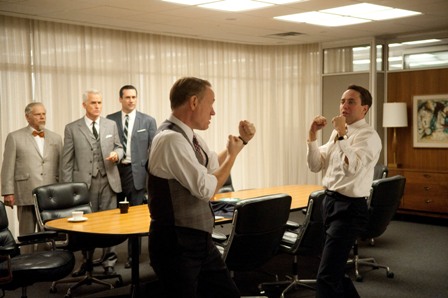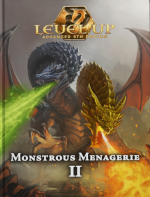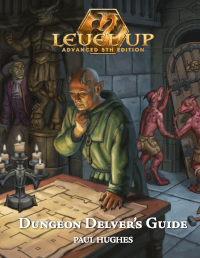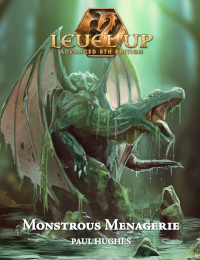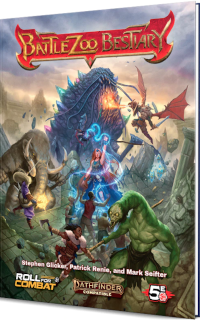The newest version or the D&D Playtest came out a couple weeks ago with many an exciting change! I thought about doing a disgusting Christmas theme and making a list of “naughty” and “nice” features of the new playtest, but my sense of decency prevailed. The good and bad highlights below:
Good:
–Fighters, Rogues, and Monks have the same hit progressions, martial damage dice, and bonus damage: Frankly, as far as class features go, these are all pretty barebones and basic, so I am perfectly happy to see these qualities shared by each class. It goes a LONG ways towards balancing them in combat relative to each other, and there is still a lot of room to distinguish them from each other with maneuvers and other abilities.
–Skill Dice: These introduce more variance to skill checks, which I tend to prefer, as it evens the playing field between disparate opponents and makes success or failure more uncertain at various difficulty levels (the uncertainty, of course, being why you roll the dice to begin with). Skill dice also address some potential concerns with the rogue. Rerolling skill dice is a nice ability but less powerful than rerolling a d20. Also, spending skill dice provides the rogue with more flexibility in using skills without giving them yet another advantage in the basic success/failure mechanic.
-Rogue Schemes: The alternative options for sneak attack are surprisingly viable, considering how big a part of the class that ability has been in previous editions. Also, requiring the rogue to give up advantage to use sneak attack or assassinate helps balance those abilities and make using them an interesting choice.
Bad:
–Feats: A number of feats seem poorly balanced. Two-Weapon Strike and Riposte both seem a bit too powerful, unless I am missing something important. With regards to TWS, guaranteed advantage is tough to pass up, especially for a rogue with sneak attack, and it doesn’t appear to have many downsides (d8 damage die compared to a d12?). Riposte seems like a no-brainer for any tank types, adding to their damage and increasing their chances of using their martial damage dice considerably. Of course, some feats are plain-out underpowered. Weapon focus, for example, adds a mere 1/6 damage per martial damage die!
–Cleric hit progression, martial damage dice, and bonus damage: These max out at +2, 4d6, and +5 by level 20, which is considerably less than HALF the bonuses of the fighter, rogue, and monk (+5, 6d6, +20). Now with Divine Power, clerics do improve noticeably to +6, 4d6, +9, but that is still 18 damage behind the other classes. I think the expenditure of a mid to high level spell (depending on what level you are) should even the ground a bit more (or clerics should just be more effective to begin with). The bottom line is that WotC needs to determine if clerics should be capable of being relatively effective melee combatants or not; their current state feels like they are making a promise about the class that they can’t deliver on.
–Spell Damage + Effects: Spells still seem a bit underwhelming compared to fighter/rogue/monk damage output. Let’s use a really simple example: a level one fighter with a two-handed sword can do about 13 damage when they hit with their Greatsword (1d12+3+1d6). Rogues and monks are a little lower at 11 (1d8+3+1d6). A wizard, in contrast, does only 5.5 damage + a minor effect with their Cantrip, which is a lot to lag behind; I’d be much more comfortable with them adding their ability mod to cantrip damage to keep up a bit. 1st level spells are similarly lacking: Burning Hands does about 10.5 damage (3d6), with a save for half. With the potential to hit multiple targets and reliably do damage even on a miss, this is certainly better than a normal hit. If a wizard could do this sort of thing at-will, I might say they were a bit overpowered, but with a limit of twice a day I am not impressed. Things don’t appear to change much at higher levels, with a 9th level fireball doing about 42 damage (12d6) versus the 51.5 damage (1d12+4+6d6+20) of the same fighter at level 20. Mike Mearls made a comment that he thought each class should look totally awesome when they do what they are best at; the wizard should wish he was the fighter when he chops enemies in half round after round, but then the fighter should look enviously at the wizard when he blows a ton of enemies apart with a well placed fireball. I’m just not convinced we’re there yet.


